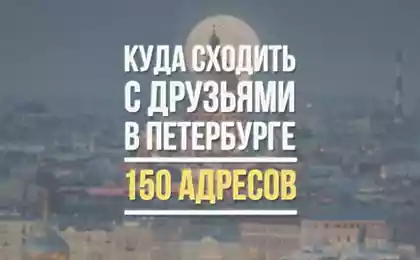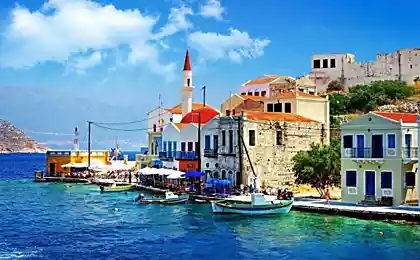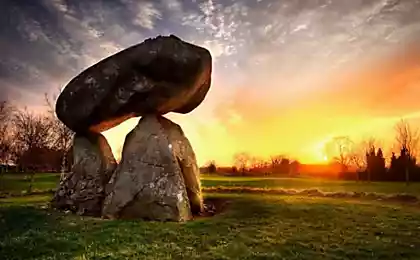199
Top 13 attractions of Antalya
Antalya has something for all the guests. If you want to concentrate on sightseeing, the labyrinth-shaped old town is full of historic sites, and the atmospheric old harbor is a quiet and serene corner to unwind. The city is very conveniently located as a base for travel to more remote areas, to the great Roman ruins at Aspendos and caves inhabited in prehistoric times. But the sights of Antalya do not end with history and architecture. This city is famous for its white sandy beaches and the Mediterranean waters of Turkey’s Turquoise Coast. Both beach lovers and history lovers will be satisfied here.
Kaleici Old TownThe labyrinth-shaped region of Kaleici seems to have been created for walking. Perfectly restored whitewashed Ottoman mansions with red roof, cobblestone streets, many boutique hotels, souvenir shops, art galleries and restaurants. Kaleichi is a place that allows you to perfectly feel the surroundings of the Old World, with a number of small attractions at every step. The main square features a fortress gate and a stone clock tower, while the 18th-century Tekeli Mehmet Mosque is noteworthy for its stunning interior decoration. Pay attention also to the majestic Kesik Minaret (tended minaret). Destroyed by fire in the 19th century, it began life as a Roman temple, but was converted into a Byzantine church, and finally became a mosque.
Antalya Old HarbourLocated in a cliff crevice, Old Harbour is an outstanding Antalya landmark. This is a picturesque cluster of shops, cute cafes, bazaars and gently swinging on the waves of the Mediterranean yachts. With its peaceful tourist atmosphere, it is now very difficult to assume that it was once the main economic center of Antalya. But from the 2nd century until the mid-20th century, the harbor was a major port, bringing trade and prosperity to the entire surrounding area. These days, tourists come here to shop and watch the sunset while sipping coffee on the terrace. You can also hire one of the many boats and go on a sea tour, or just sunbathe on an empty beach.
Antalya MuseumIf you are interested in Turkish history, don’t miss this excellent museum. The magnificent exhibitions here showcase the very best that researchers find at excavation sites all along the Turkish coast. The collection is showcased in a perfect way, making it easy to understand Turkey’s rich and complex history. The large archaeological section offers exhibitions from the Bronze Age to Byzantium, with particular emphasis on the ruins in the neighbouring area. If you don’t have much time, head to galleries where you can see mosaics, silverware and antique statues.
Yivley MinaretAntalya’s most distinctive landmark, Yivli Minaret, was built by Seljuk Sultan Aladdin Kikubad (1219-36). The minaret is a typical example of Seljuk architecture with a square base and an octagonal pedestal. The 14th century mosque is still in use today.
Adrian's GateHadrian’s Gate is one of the main (and most dramatic) attractions of Antalya, the entrance gate to the Kaleici district. Significant stretches of Hellenistic and Roman city walls on the eastern side of the old city have been preserved, and Hadrian's Gate is the most famous of these sections. Installed to commemorate a visit by Emperor Hadrian himself in 130 CE, this imposing marble gate with three arches and towers is decorated with exquisite decorations. As you walk through the arches, look at the ceiling to get a better look at the beautifully preserved carvings.
Roman fortressThis squat cylindrical tower 14 meters high seems to follow the old harbor, located on the edge of Karaalioğlu Park. Built in the 2nd century, the Roman fortress remains a mystery. No one is quite sure what its main function is, but most agree that the tower was a fire tower, or beacon in the busy port below. Now it is a fantastic setting to watch the sunset, offering panoramic views throughout the harbor area. The park itself is a calm, blooming place where you can have a picnic and relax from the bustling city.
aspendosThe main reason why history buffs visit Antalya is an excursion to Aspendos. This archaeological site is home to the Roman theatre, one of the most preserved in the world. Aspendos is one of the main attractions of Turkey. The glory days of this magnificent ancient city came in the 2nd and 3rd centuries, when most of today’s ruins were built. Apart from the theatre, which has been completely restored and can accommodate 15,000 guests, most of Aspendos still lies in ruins, but this is no less interesting for tourists.
termesosNeither the Greeks nor the Romans managed to tame the militant Pisidians, who desperately defended their independence in their mountain nest called Termessos. The well-preserved remains of this ancient city are scattered along a rugged slope with stunning views of the surrounding countryside. Sturdy shoes and take plenty of water if you want to explore the place completely. The street with columns and the upper agora are especially impressive, but do not miss the theater, which offers unreal views of the peaks of Mount Taurus.
pergeThe vast and rubble-filled Perge Stadium, the ruined temples and the huge agora are filled with the atmosphere of past glory. Perge was once the capital of ancient Pamphylia, which flourished first under Greek rule, then under Roman rule. The ruins here are not as well preserved as other Antalya sights on Turkey’s Turquoise Coast. But it also means the city of Perge attracts fewer crowds, allowing visitors to better explore the long streets and dilapidated temples. Roman baths, Hellenistic Gate and Acropolis are particularly interesting sights of Perge.
Chimera and OlympusThe twin villages of Olympus and Chimera are located on a beautiful coastline surrounded by the ruins of the ancient Lycian city of Olympus. A famous landmark here is the chimera, a natural eternal fire that shimmers from a mountain cliff. Olympus is popular with young tourists and has a reputation for partying, while the Chimera is more laid-back, approaching a beach holiday. Both villages are ideal for a holiday away from Turkey’s built-up tourist resorts.
Karst springs of AntalyaThe countryside around Antalya is rich in karst springs, gutter wells and waterfalls. Lime deposits were formed here within 1.5-2 million years, forming vast terraces similar to Pamukkale. Kirkgoz and Pinarbashi (northwest of Antalya) have springs and gutter wells, while Dübenbashi has a cascade of waterfalls falling into a narrow gorge.
Karain CaveKarain Cave is located 27 kilometers northwest of Antalya. It has been inhabited by prehistoric man since the early and middle Paleolithic era. During excavations, bones and teeth belonging to Neolithic man were found here. Some exhibits are on display in a small but surprisingly comprehensive museum. Karain Cave is not as popular as other Antalya attractions, but if you have time, be sure to visit it.
PhaselisThe old Lydian port of Phaselis is exactly where Alexander the Great built his winter apartments in 334 BC. There are remnants of a theater, aqueduct, temples and the Gate of Hadrian’s Arch, erected in 114 AD. Be sure to discover a museum where the exhibits of the excavations are stored.
Source: lifeglobe.net/
Kaleici Old TownThe labyrinth-shaped region of Kaleici seems to have been created for walking. Perfectly restored whitewashed Ottoman mansions with red roof, cobblestone streets, many boutique hotels, souvenir shops, art galleries and restaurants. Kaleichi is a place that allows you to perfectly feel the surroundings of the Old World, with a number of small attractions at every step. The main square features a fortress gate and a stone clock tower, while the 18th-century Tekeli Mehmet Mosque is noteworthy for its stunning interior decoration. Pay attention also to the majestic Kesik Minaret (tended minaret). Destroyed by fire in the 19th century, it began life as a Roman temple, but was converted into a Byzantine church, and finally became a mosque.
Antalya Old HarbourLocated in a cliff crevice, Old Harbour is an outstanding Antalya landmark. This is a picturesque cluster of shops, cute cafes, bazaars and gently swinging on the waves of the Mediterranean yachts. With its peaceful tourist atmosphere, it is now very difficult to assume that it was once the main economic center of Antalya. But from the 2nd century until the mid-20th century, the harbor was a major port, bringing trade and prosperity to the entire surrounding area. These days, tourists come here to shop and watch the sunset while sipping coffee on the terrace. You can also hire one of the many boats and go on a sea tour, or just sunbathe on an empty beach.
Antalya MuseumIf you are interested in Turkish history, don’t miss this excellent museum. The magnificent exhibitions here showcase the very best that researchers find at excavation sites all along the Turkish coast. The collection is showcased in a perfect way, making it easy to understand Turkey’s rich and complex history. The large archaeological section offers exhibitions from the Bronze Age to Byzantium, with particular emphasis on the ruins in the neighbouring area. If you don’t have much time, head to galleries where you can see mosaics, silverware and antique statues.
Yivley MinaretAntalya’s most distinctive landmark, Yivli Minaret, was built by Seljuk Sultan Aladdin Kikubad (1219-36). The minaret is a typical example of Seljuk architecture with a square base and an octagonal pedestal. The 14th century mosque is still in use today.
Adrian's GateHadrian’s Gate is one of the main (and most dramatic) attractions of Antalya, the entrance gate to the Kaleici district. Significant stretches of Hellenistic and Roman city walls on the eastern side of the old city have been preserved, and Hadrian's Gate is the most famous of these sections. Installed to commemorate a visit by Emperor Hadrian himself in 130 CE, this imposing marble gate with three arches and towers is decorated with exquisite decorations. As you walk through the arches, look at the ceiling to get a better look at the beautifully preserved carvings.
Roman fortressThis squat cylindrical tower 14 meters high seems to follow the old harbor, located on the edge of Karaalioğlu Park. Built in the 2nd century, the Roman fortress remains a mystery. No one is quite sure what its main function is, but most agree that the tower was a fire tower, or beacon in the busy port below. Now it is a fantastic setting to watch the sunset, offering panoramic views throughout the harbor area. The park itself is a calm, blooming place where you can have a picnic and relax from the bustling city.
aspendosThe main reason why history buffs visit Antalya is an excursion to Aspendos. This archaeological site is home to the Roman theatre, one of the most preserved in the world. Aspendos is one of the main attractions of Turkey. The glory days of this magnificent ancient city came in the 2nd and 3rd centuries, when most of today’s ruins were built. Apart from the theatre, which has been completely restored and can accommodate 15,000 guests, most of Aspendos still lies in ruins, but this is no less interesting for tourists.
termesosNeither the Greeks nor the Romans managed to tame the militant Pisidians, who desperately defended their independence in their mountain nest called Termessos. The well-preserved remains of this ancient city are scattered along a rugged slope with stunning views of the surrounding countryside. Sturdy shoes and take plenty of water if you want to explore the place completely. The street with columns and the upper agora are especially impressive, but do not miss the theater, which offers unreal views of the peaks of Mount Taurus.
pergeThe vast and rubble-filled Perge Stadium, the ruined temples and the huge agora are filled with the atmosphere of past glory. Perge was once the capital of ancient Pamphylia, which flourished first under Greek rule, then under Roman rule. The ruins here are not as well preserved as other Antalya sights on Turkey’s Turquoise Coast. But it also means the city of Perge attracts fewer crowds, allowing visitors to better explore the long streets and dilapidated temples. Roman baths, Hellenistic Gate and Acropolis are particularly interesting sights of Perge.
Chimera and OlympusThe twin villages of Olympus and Chimera are located on a beautiful coastline surrounded by the ruins of the ancient Lycian city of Olympus. A famous landmark here is the chimera, a natural eternal fire that shimmers from a mountain cliff. Olympus is popular with young tourists and has a reputation for partying, while the Chimera is more laid-back, approaching a beach holiday. Both villages are ideal for a holiday away from Turkey’s built-up tourist resorts.
Karst springs of AntalyaThe countryside around Antalya is rich in karst springs, gutter wells and waterfalls. Lime deposits were formed here within 1.5-2 million years, forming vast terraces similar to Pamukkale. Kirkgoz and Pinarbashi (northwest of Antalya) have springs and gutter wells, while Dübenbashi has a cascade of waterfalls falling into a narrow gorge.
Karain CaveKarain Cave is located 27 kilometers northwest of Antalya. It has been inhabited by prehistoric man since the early and middle Paleolithic era. During excavations, bones and teeth belonging to Neolithic man were found here. Some exhibits are on display in a small but surprisingly comprehensive museum. Karain Cave is not as popular as other Antalya attractions, but if you have time, be sure to visit it.
PhaselisThe old Lydian port of Phaselis is exactly where Alexander the Great built his winter apartments in 334 BC. There are remnants of a theater, aqueduct, temples and the Gate of Hadrian’s Arch, erected in 114 AD. Be sure to discover a museum where the exhibits of the excavations are stored.
Source: lifeglobe.net/
Spain is the second processing plastic
Scientists have learned to identify infections in newborns by DNA























